Learning Objectives
After completing this topic “Porosity Measurement“, you will be able to:
- Describe the different types of porosity found in geological formations.
- Discuss the primary core porosity laboratory analysis techniques.
- Discuss the effect of the reservoir pressure on the formation’s porosity.
- Compare the accuracy of the primary core porosity laboratory measurements.
Types of Formation Porosity
Porosity is the volumetric void space within rocks, being that space not occupied by solid rock material. Porosity is thus a measure of a reservoir’s storage capacity. It is defined as the void volume, or the pore volume, of a formation sample divided by its bulk volume. Most oilfield equations input porosity as a fraction, but in core analysis and reservoir studies, it is usually reported as a percentage value. To avoid confusion, many practitioners prefer the term “porosity unit (p.u.)” instead of quoting a percentage porosity difference, or change.
Types of Formation Porosity
Subsurface formation porosity generally varies from almost zero up to around 40% in sandstones (Figure 1) and up to around 37% in chalk (Figure 2), limestones (Figure 3) and dolomites (Figure 4).
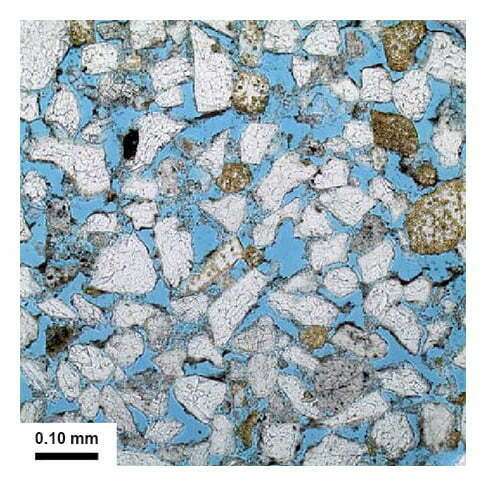
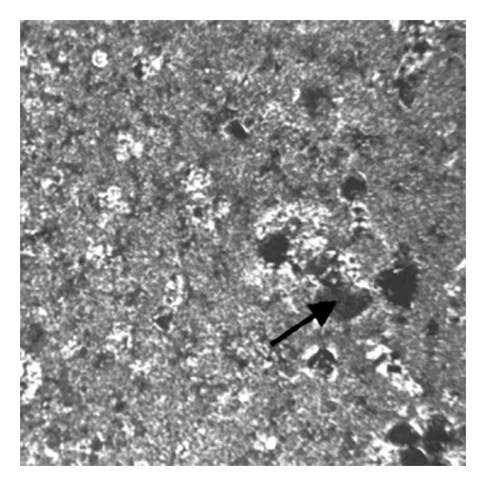
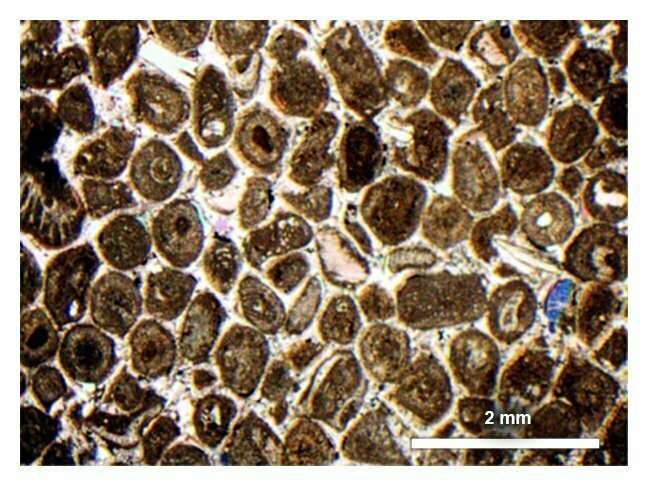
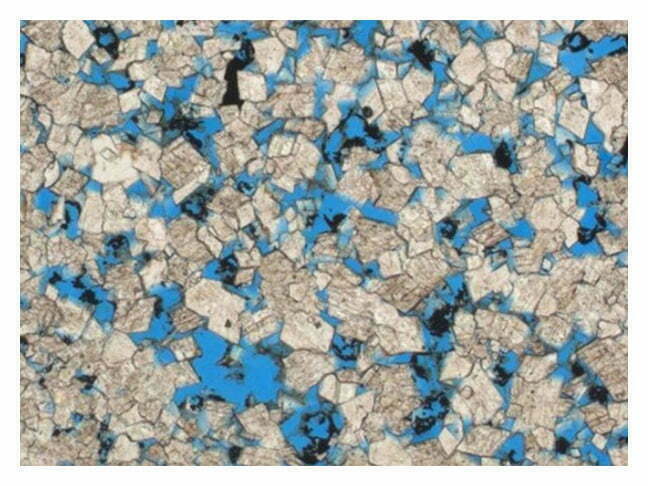
Four main porosity types occur in sandstone reservoirs:
- Intergranular (primary) porosity, being the spaces between the detrital grains
- Microporosity, being the small pores commonly associated with detrital and authigenic clays
- Dissolution (secondary) porosity, being the pore spaces formed by the partial or complete dissolution of framework grains and cements
- Fracture porosity, being the void space associated with natural fractures
Carbonate pore types are more varied than in sandstones. The main pore groups are:
- Fabric selective (interparticle, intraparticle, intercrystal, moldic, fenestral, shelter and growth framework)
- Not fabric selective (fracture, channel, vug and cavern)
From a volumetric perspective, seven common porosity types are defined as:
- Interparticle, being porosity between particles
- Intraparticle, being porosity within individual particles or grains
- Intercrystal, being porosity between crystals
- Moldic, being porosity formed by the selective removal of an individual constituent of the rock
- Fenestral, being pores larger than grain-supported interstices
- Fracture, being porosity formed by fracturing
- Vugular, being pores larger than 1/16 mm in diameter and often equant in shape
Pores vary in size from microscopic, intergranular up to vugs, caverns or fractures normally caused by secondary diagenetic processes (Figure 5).
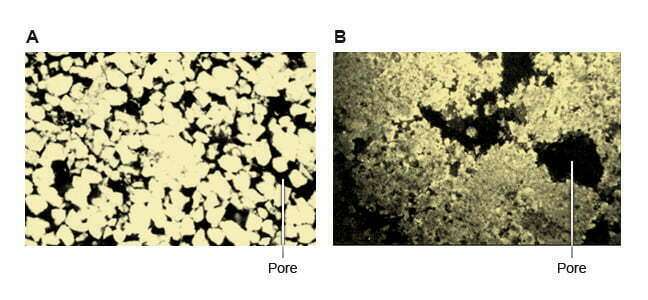
A porous rock sample will have a measurable pore volume (PV), a measurable grain volume (GV) and a measurable bulk volume (BV). Any two of these three variables must be measured or calculated to determine porosity. These three variables may be combined to establish porosity. The measurement technique selected depends on the rock type analyzed and the timescale required to obtain the data for decision making. The following equations apply:
![]()
![]()
![]()
Total pore space is defined as all of the pore space present within a rock sample, whether it exists as an isolated pore sealed by secondary cementation (Figure 6) or whether it is connected to other pores. Effective pore space is defined as the pore volume of only the interconnected pore network (Figure 7). Only the effective porosity contributes to hydrocarbon production, but a number of downhole LWD and wireline well logs indirectly sense the total porosity.
While reservoirs always have both total and effective porosity, differences between the two can sometimes be critical for reservoir performance. In clean, high porosity sandstone reservoirs, the difference between total and effective porosity is usually small and therefore of limited concern. Many laboratory analysis techniques sense the effective porosity, but total porosity can be determined if the sample is broken down into grain size and a specialized technique employed.
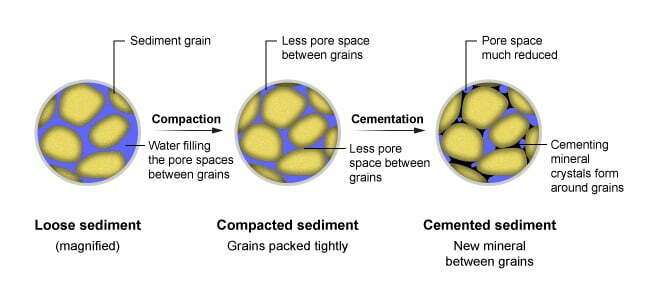
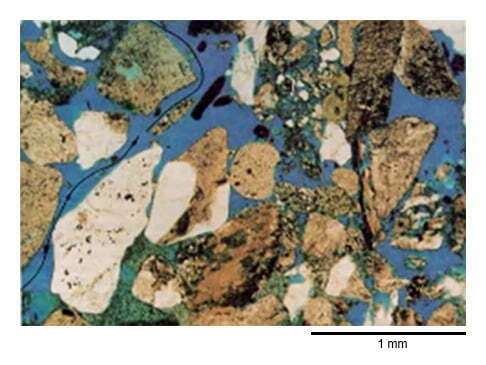
 Petro Shine The Place for Oil and Gas Professionals.
Petro Shine The Place for Oil and Gas Professionals.



